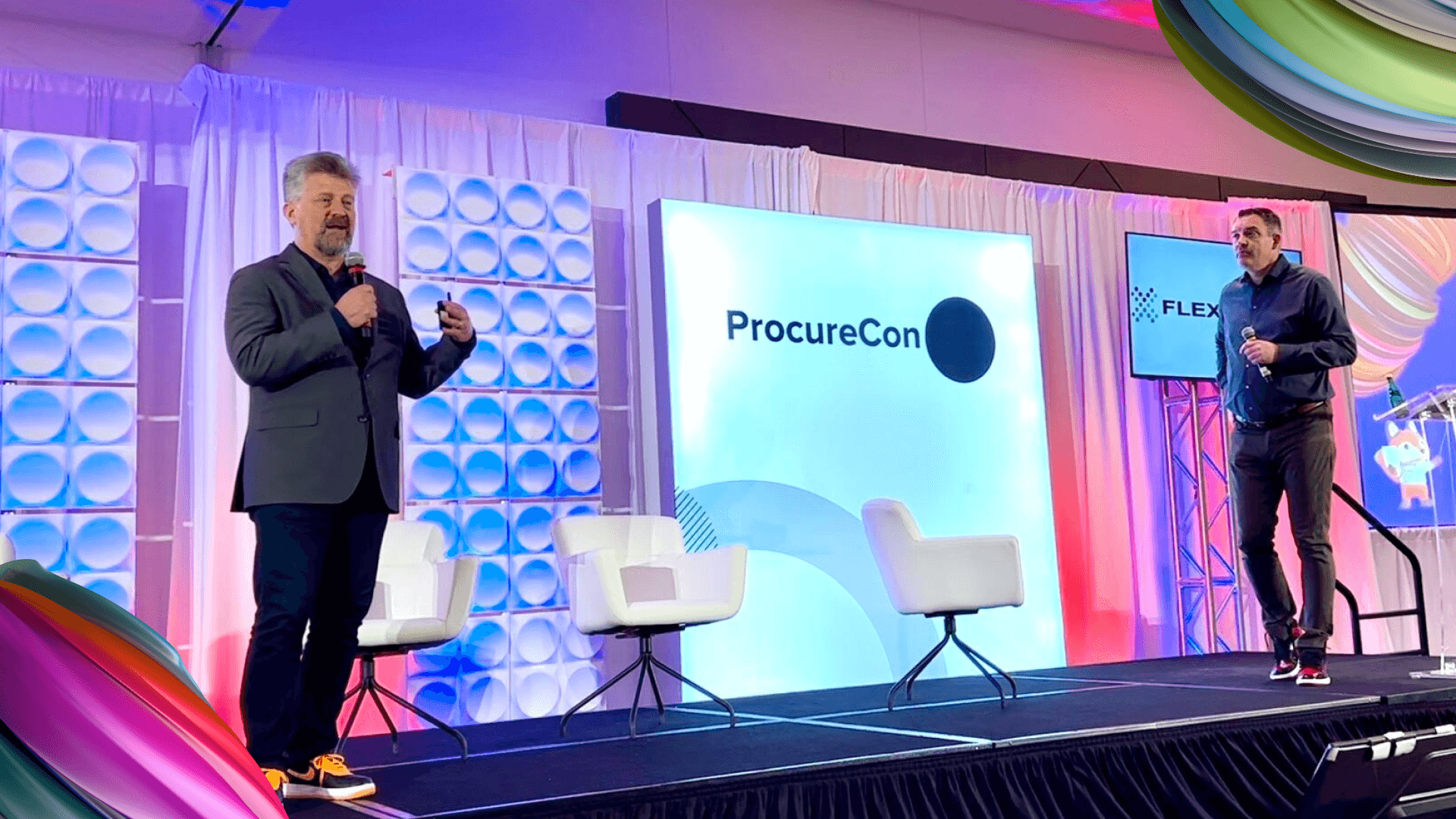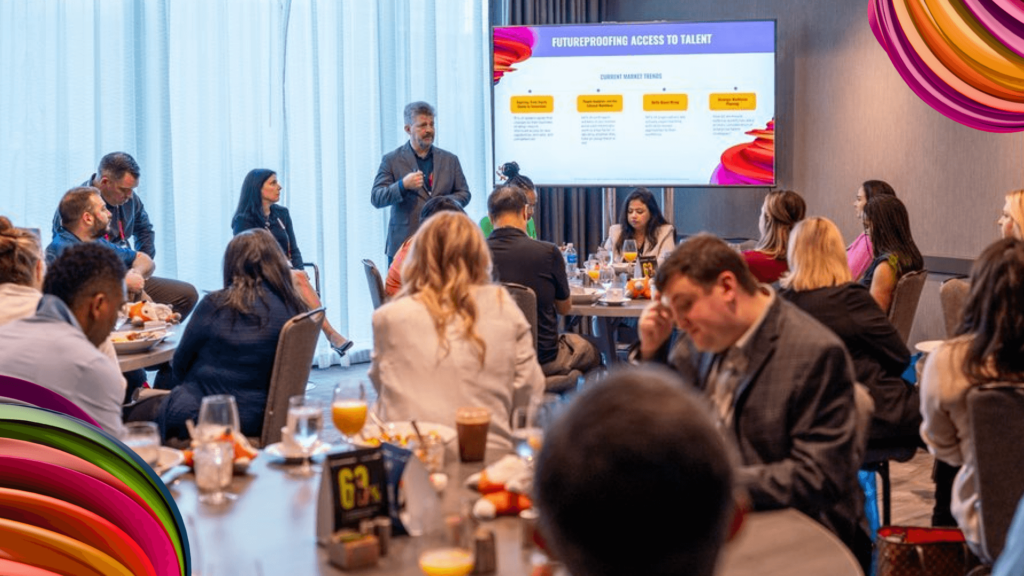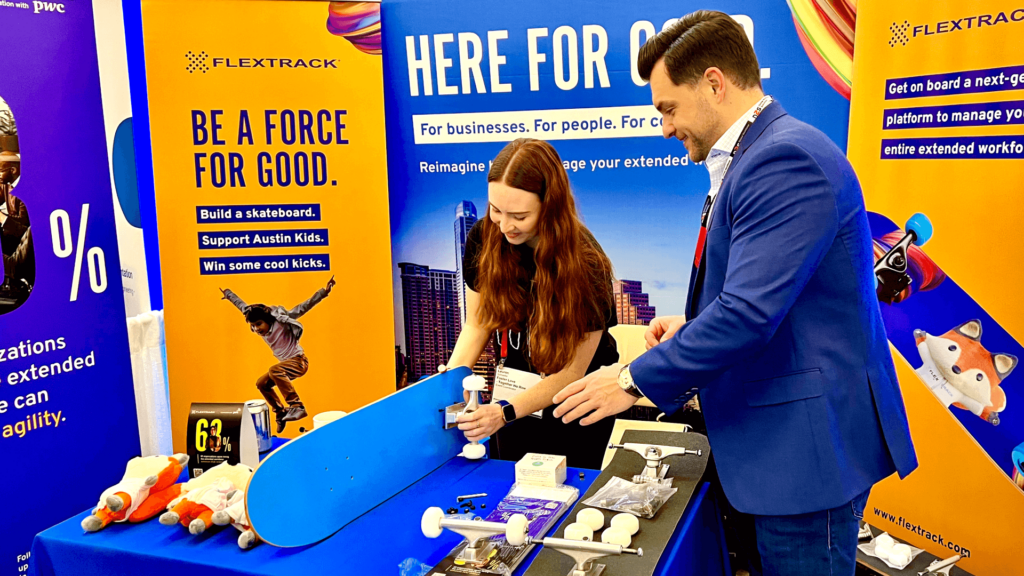
06 Apr Dispatch from ProcureCon 2023: Change is Here for Good
Here we are on April 6th, and the Spring conference season is in full swing. So far it’s been a good one. Throughout shifting labor markets and economic outlooks, investment in talent-focused technology remains high. Candidate experience, people analytics, and direct sourcing have all featured prominently in exhibit halls and on conference agendas for each of the events I’ve attended so far.
ProcureCon Contingent Staffing was held last week in Austin. Before I share some insights, let me tell you that people in Texas can work magic with an open flame and natural proteins. Whether you’re at a working ranch outside of the city or a concept restaurant downtown, you simply must smell, taste, and feel the wizardry of authentic Texas cooking for yourself. For many of us, getting to know the people who put their time, expertise, and selves into creating wonderful meals and social experiences for visitors is the real highlight. Thank you!

Gastronomic delights aside, 3 trends stood out at ProcureCon. Together they point to a significant and permanent change underway in the external workforce industry:
1. HR must fully embrace non-employee workforces.
Skills gaps and talent shortages endure. At the same time, greater numbers of skilled professionals are choosing non-traditional employment models such as freelancing and contracting to give them the flexibility and income they need to manage their careers. Procurement professionals, traditionally the “owners” of contingent workforces, have begun seeking closer collaborations with human resources colleagues to help manage this growing segment of the workforce.
Many are meeting ambivalence or resistance from HR, who can themselves be stuck in “we only handle FTEs” silos. A few procurement experts are able to share success stories about building programs with HR from the ground up. These amount to master classes in change management and collaboration, so it can be done.
The takeaway? While corporate priorities may remain on traditional FTEs, HR should accept the offer of collaboration from procurement colleagues to complete their corporate talent strategies and ensure future-proof access to skills with their extended workforce.
2. Diversity, Equity, and Inclusion are coming to the contingent workforce.
Until recently, the contingent workforce industry has been content marking its progress in this area through percentage of spend that goes through businesses, mostly staffing suppliers, designated as diverse. Many speakers and conference participants noted that this approach is not enough anymore and that it’s time to overcome the compliance and data challenges long associated with the lack of progress in this area.
Flextrack shared a few recent data points indicating increased interest among executives for more deliberate hiring in the contingent workforce as part of a corporate DE&I strategy. This matches Flextrack data from contingent workers themselves on how a company’s DE&I commitments influence their decision to accept an assignment. Clear demand from both sides of the employment equation on this topic should encourage talent professionals to work intentionally towards a more diverse, equitable, and inclusive external workforce that fits within their risk profiles, and that serves their organizations and communities well.
3. You cannot be everything to everyone.
Several contingent workforce buyers and program managers on panels, on the exhibit floor, and in the audience noted a trend of vendors “trying to be everything for everyone.” This happens in technology solutions when a single provider tries to push features and functions gained through a recent acquisition or a hurry-up build based on its own corporate growth strategy and/or an outdated value proposition. Usually, the buyers end up with clunky or substandard technology that restricts agility and dampens adoption among key user groups.
Talent buyers need options and flexibility to navigate shifting labor markets while increasing productivity and wellness among their workforces. Fortunately, the talent ecosystem is flourishing with specialized suppliers and solutions to serve end customers’ very specific needs. Flextrack’s Platform as a Service VMS enables fast and flexible integrations with anyone from the ecosystem to create a sustainable, fit-for-purpose external workforce program without limiting functionality or sacrificing quality.
For years the contingent workforce industry has been known to lag behind the rest in terms of change and innovation. This is no longer the case as organizations have begun the accelerating process of digital transformation of their extended workforce practices with ideas and technology already under adoption.
The phrase we’ve all heard is: “the only constant is change.”
We propose a different perspective

Change is Here for Good. Take advantage of change in the environment and define what is good for your organization, your customers, and your people. Then, make it happen with the right technologies and the right mindsets.
Ask for a demo and experience Flextrack’s agile, integration-forward extended workforce Platform as a Service and future-proof your external workforce program today.

Jeff Mike
Head of Insights and Impact, Flextrack
